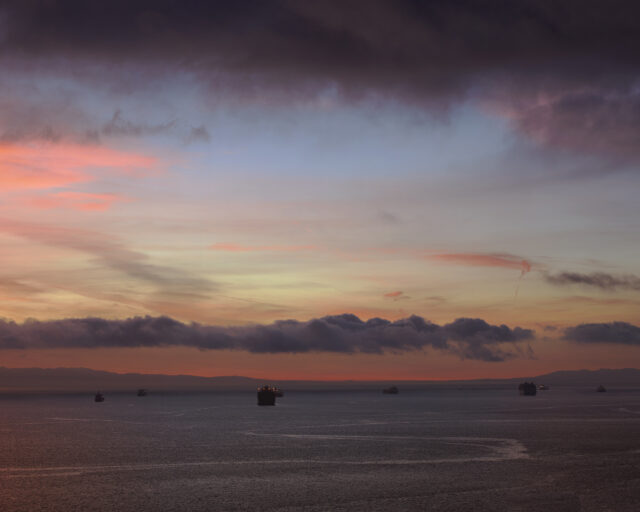Richard Misrach on Border Cantos
In early 2016, Aperture will release the latest addition to Richard Misrach’s ongoing Desert Cantos series: an examination of the U.S.–Mexico border that is both document and interpretation, a collaborative undertaking with composer Guillermo Galindo. Misrach stopped by Aperture to finalize critical details of the book.
In the early days of a presidential campaign in which immigration is a heated issue, and on the heels of Pope Francis’s U.S. visit in September—when he urged Congress to show compassion toward those who “travel north in search of a better life,”—Richard Misrach visited the Aperture Foundation to scrutinize the design and production details for his forthcoming book, Border Cantos. This project focuses on the U.S.–Mexico border and has been developed over several years in close collaboration with the Mexican American composer Guillermo Galindo. In between looking at color proofs and signing copies of his last Aperture publication, The Mysterious Opacity of Other Beings, Misrach gave a presentation in which he walked the Aperture staff through the layout of the book-in-progress. The book will accompany a traveling exhibition of the work, opening at the San Jose Museum of Art in February 2016. The exhibition will also include handcrafted instruments created by Galindo out of discarded materials Misrach collected from the border.
Since 1979, Misrach has worked on his Desert Cantos series, exploring unseen aspects of the American West, specifically its vast deserts. His Border Cantos project specifically focuses on the narrow strip of land where hundreds of people die each year attempting to cross into the U.S. from Mexico, which Misrach called “a huge humanitarian disaster every day.” He explained how most of what he saw was surprising and goes mostly unreported: unexplained scarecrow-like sculptures made in the desert, water stations set up by humanitarian-aid groups, ephemera left strewn across the desert during various crossings. Misrach began to collaborate with Galindo to create a score for a series of compositions intended to be performed entirely on handmade instruments made out of what Misrach picked up along the border, including, in one case, a piece of the border wall itself. Despite the border’s divisive, prominent place in the current political conversation, Misrach emphasized the unseen stories behind the policy—one he believes will be widely regretted in years to come. “There’s all this activity no one knows about,” he said, of the photographs that will make up Border Cantos.
The above slide show includes images from Misrach’s visit and from the project in various stages of development.

























